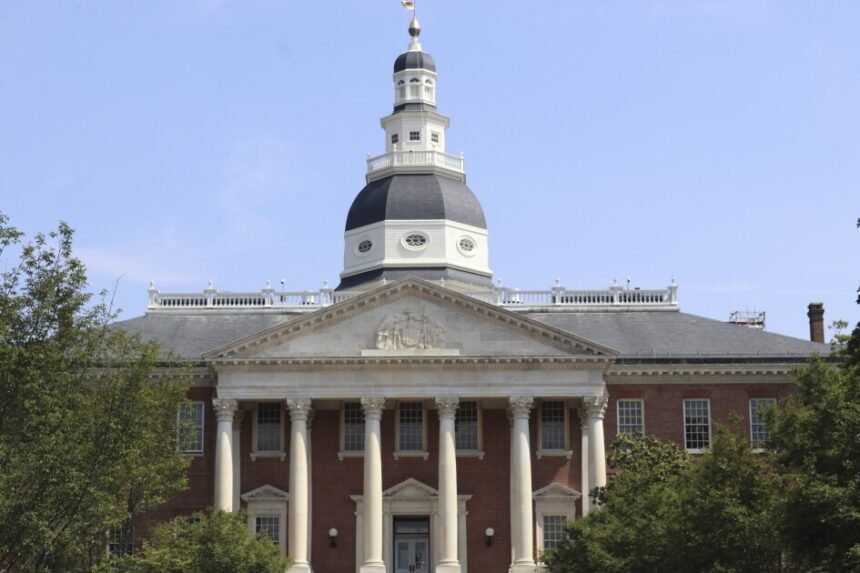The Maryland State Department of Education is objecting to estimates from the state’s inspector general for education regarding the amount of money spent on missing students.
Inspector General Richard Henry estimates that the state spent nearly $1 billion over the past six school years to educate students who aren’t attending class, as reported in a letter to Republican lawmakers, first reported by FOX45. In response, MSDE told The Baltimore Sun that the inspector general’s analysis “lacks critical context and provides an inaccurate fiscal impact.”
Henry also wrote in his letter that he believes further investigation would reveal the state isn’t implementing recommendations he made following a prior audit of state aid enrollment counts at Baltimore City Public Schools.
He told The Sun that his office has not had the opportunity to follow up on the issue due to other ongoing cases.
Asked about Henry’s accusation that MSDE isn’t following recommendations, a spokesperson detailed changes MSDE has implemented since the 2022 audit, and said the department is again reviewing Henry’s recommendations in order “to ensure full efficacy of current practices.”
Are students’ whereabouts unknown?
One point of contention centers on MSDE’s W50 code. Henry said in his letter that the code stands for “Whereabouts Unknown,” but MSDE said the W50 code stands for “Not Accessing Educational Services,” and that the whereabouts of the majority of these students “are known.”
A 2020 Maryland Student Records System Manual states that the W50 code stands for “Not Accessing Educational Services,” which includes “any student whose whereabouts are unknown … or whose whereabouts are known, but are not in school or an educational program.” The code may “also be used for a student who is a runaway or a student who is known or suspected to be abducted (as documented by an appropriate governmental agency).”
MSDE told The Sun that after a student reaches 10 consecutive unlawful absences, they “must be disenrolled using the W50 code.”
Henry told The Sun that he is not claiming school districts have definitely received nearly $1 billion in unjustified funds, but rather that this would be the figure if all students in the “whereabouts unknown” category were actually funded.
He said his initial analysis showed that MSDE subsequently locates a small percentage of students who once had “unknown whereabouts.”
Continued enrollment throughout the year
While students may be disenrolled during the school year, MSDE said there are also increases in enrollment after the initial enrollment count in September, which is used to determine eligibility for student aid. In 2022, there was an increase of nearly 9,000 students at subsequent dates during the school year, nearly 5,000 in 2023, and more than 7,000 in 2024.
MSDE said Henry’s analysis doesn’t account for incoming transfers or a student’s length of time in the school district, and that it’s not based on unique students or linked to Sept. 30 funding.
“The fiscal impact is based on a flat per pupil calculation, which is inconsistent with school funding practices in Maryland,” an MSDE spokesperson said in an email.
Henry told The Sun that districts don’t receive funding for students who enroll after the primary enrollment period from Sept. 1 to Sept. 30. He added that districts must report to MSDE on the students’ known or unknown whereabouts.
Recommendations were made in a previous audit
In his letter to Republican lawmakers, Henry reiterated recommendations he had made after a prior audit, directing MSDE to perform additional error checks, and modify its audit approach. Henry said he believes further investigation would reveal these recommendations “have not been incorporated into MSDE’s annual review process or implemented at all.”
In response to Henry’s claim, Hill said MSDE “now uses the March and End of Year attendance collections to identify students who were possibly reported by local school systems in error for September 30th, such as students who have zero days of attendance or who had a retroactive withdrawal date. Errors are sent to local school systems to investigate and determine the reason for the error.”
Hill added, “District data system processes and the emphasis on chronic absenteeism statewide have increased the accuracy of the students being marked as W50 after the 10-day window.”
MSDE also noted that W50 withdrawal codes were not the focus of the OIGE findings in 2022.
“The OIGE report was related to ineligible students on September 30th enrollment counts who received funding, which should not be confused with students who were eligible and identified for funding, then left the school systems.”
Calls for change, union pushback
Del. Kathy Szeliga, who represents Baltimore County, expressed concern about the inspector general’s findings. She is among a number of Republican delegates and members of the Maryland Freedom Caucus who wrote to Henry in late September about the issue, prompting his written response.
“There’s two things we should look at,” Szeliga told The Sun. ”No. 1 are the real victims, who are the children who are left behind … kids who disappeared from the system … And then secondly, the taxpayers who were being short-changed, either by gross negligence or a systemic loophole that allows funding without accountability.”
Cristina Duncan Evans, who serves as teacher chapter chair for the Baltimore Teachers’ Union, pushed back on Henry’s report.
“It’s a deliberate political choice to investigate waste, fraud, and abuse in a way that has the likely outcome of reducing education funding while teachers in Baltimore City are told that schools lack funds for instructional materials,” she told The Sun in a text message. “There’s a way to investigate government operations that acknowledges and mitigates the potential harm to the people least served, and this isn’t it.”
MSDE said student absenteeism remains a challenge for school systems across the state and nation, and said the department “remains committed to supporting local school systems in prioritizing student attendance.”







